How Mathematical Symbols Help Students Master Math Faster
Mathematics may look like endless numbers, but it is actually a language built on symbols and punctuation marks. These basic math symbols are like grammar and vocabulary. Just like English has letters, math has symbols. Common mathematical expressions use the plus sign (+), minus sign (−), and the equal symbol (=). Without these basic symbols, even a simple problem would take many words to explain.
Instead of writing “three plus five equals eight”, we can write: 3 + 5 = 8. This shorter way is easier and more powerful. Students who learn common math symbols early can solve problems faster. They see the meaning right away and don’t waste time with long sentences.
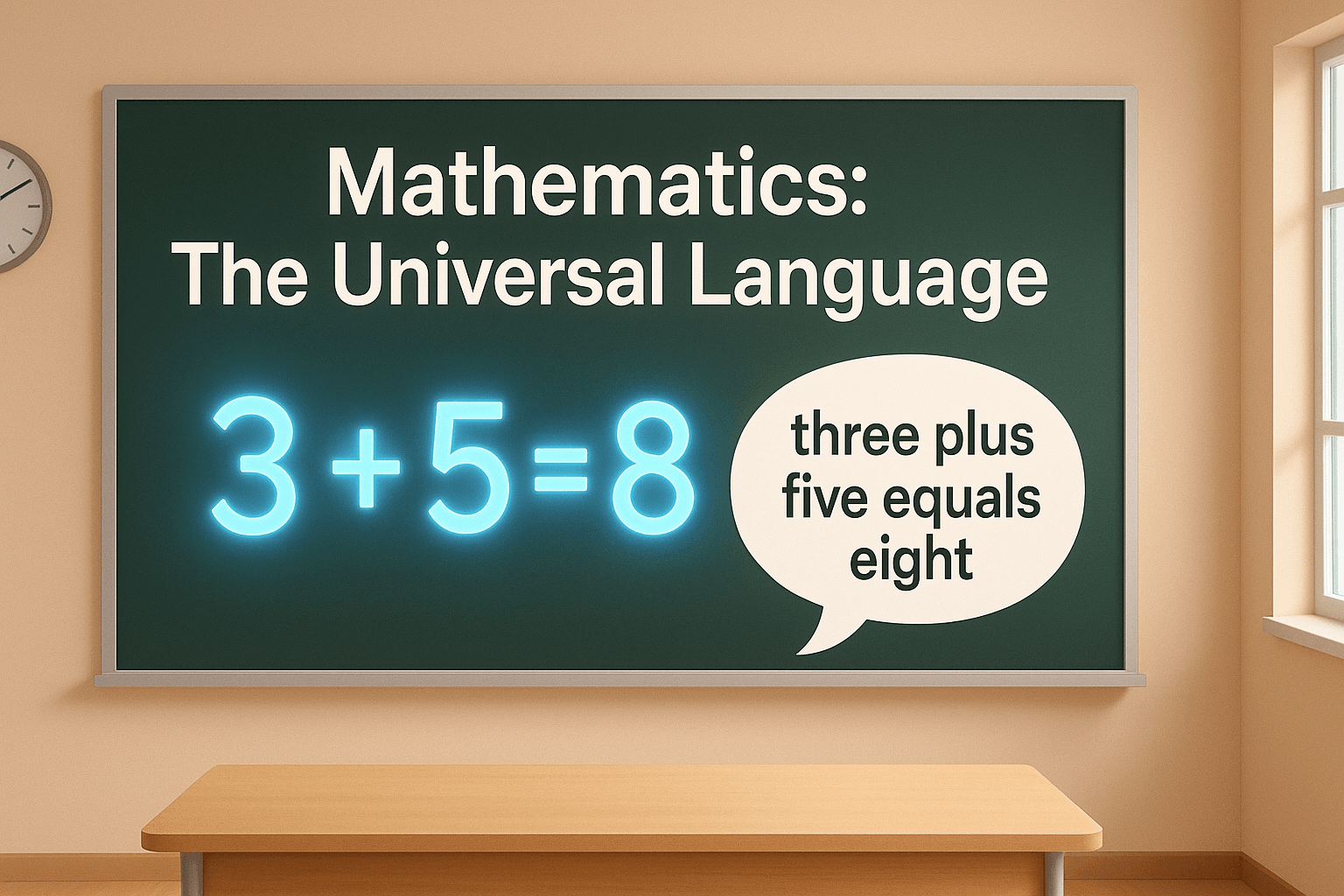
The value of mathematical objects goes beyond saving time. Symbols carry the same meaning everywhere. A student in India, Brazil, or the U.S. will understand the infinity symbol (∞), the square root (√), or the multiplication symbol (×). These non varying objects make math a universal language.
In exams, speed matters. A student who knows the division sign (÷), the multiplication sign (×), and π (pi) can solve problems faster than someone who must turn these signs into words. When students use symbols as building blocks, they change how they learn math. They break hard problems into small, easy steps.

What Are Mathematical Symbols and Why Do They Matter?
Mathematical symbols are standardized notations representing values, operations and relationships. They are the shorthand of mathematics. Imagine writing a page-long explanation every time you want to describe a line segment, a random variable or an identity matrix. Without symbols, math would become long-winded and inefficient.
Take the equal symbol (=). It tells us instantly that both sides of an equation have the same meaning in value. The division symbol (÷) shows one number divided by another. This keeps things clear and avoids long explanations. The less than or equal (≤) and greater than or equal (≥) signs provide clear meanings in inequalities. Without them, we would need longer sentences to explain.
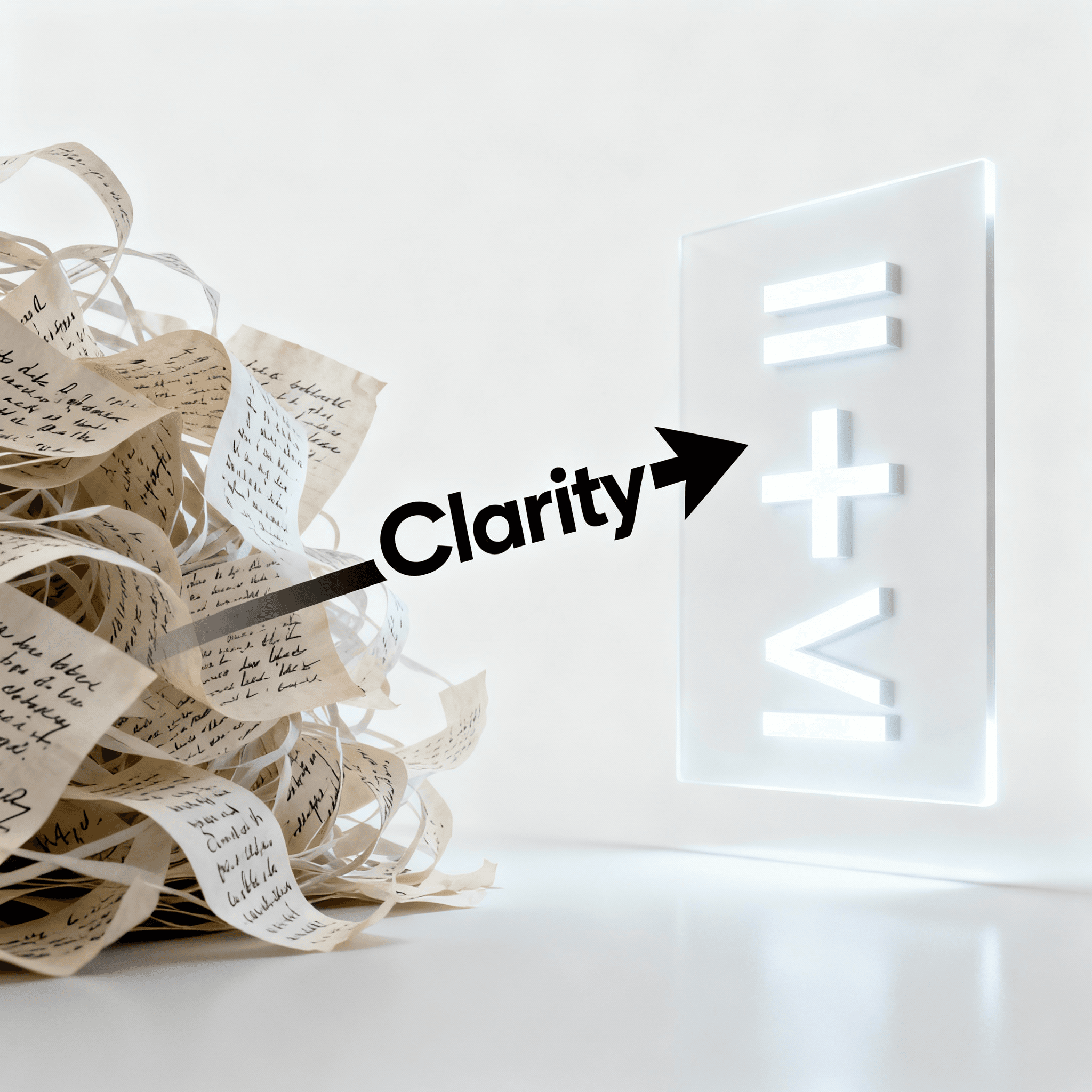
Symbols also represent non-varying objects in mathematics. For example, the Archimedes constant (π) is always the ratio of a circle’s circumference to its diameter. The imaginary unit (i) represents √−1. The additive identity (0) keeps other numbers the same when you add it. These constants are foundational components that remain constant in all contexts.
In short, basic symbols are essential, not just convenient. They lower cognitive load, help with understanding abstract ideas and support consistent learning. Without them, students would struggle with both basic and advanced math.

Mathematical Symbols as Key Mathematical Objects
Key mathematical objects like numbers, sets and operations are written using mathematical symbols. In set theory, we can simplify by using symbols, such as set A, set B, etc . For instance, instead of saying, “Set A has elements one, two, and three”, we write: A = {1, 2, 3}. The curly braces are the symbol used to show the set clearly.
These basic symbols expand into more symbols such as ∈ (element of), ∪ (union), and ∩ (intersection). They show the relationships between mathematical sets in a short and clear way.
In a vector space, an arrow above a letter (like v⃗) shows a vector. The asterisk sign (*) may represent a complex conjugate or a dual. These mathematical objects and common symbols make abstract ideas simple to write.
Symbols work like maps. They represent numbers, show possible values and guide students through mathematical concepts. They connect basic operations to complex symbols in algebra, geometry and analysis.
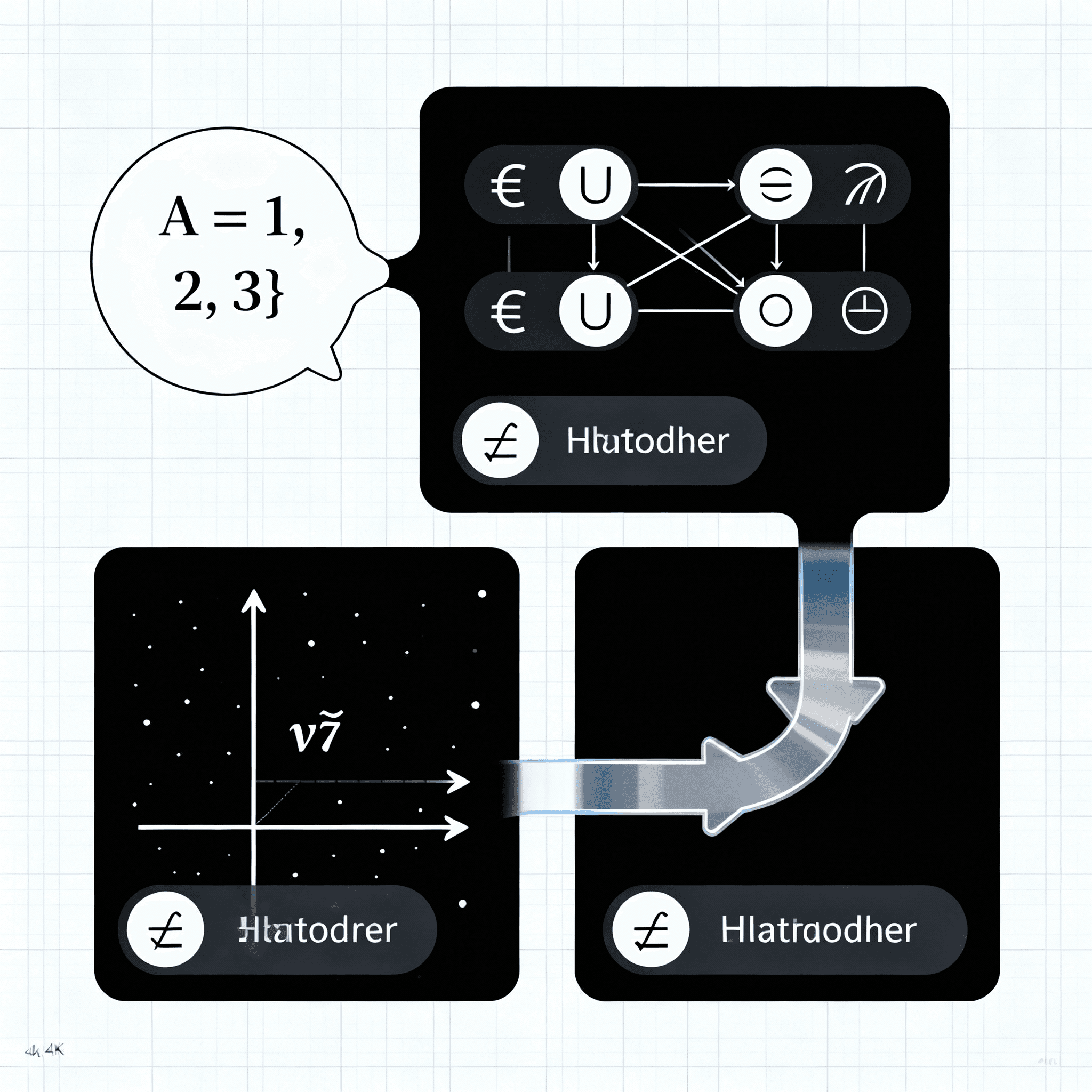
Common Math Symbols List Every Student Should Know
There are hundreds of math symbols, but some appear so often that every student must know them. This following table gives a quick overview of the most commonly used constants and symbols:
+ (plus sign) → addition, part of basic operations
− (minus sign) → subtraction, essential in arithmetic operators
× (multiplication symbol or multiplication dot ·) → represents multiplication
÷ (division symbol) → division of one value by another
= (equal symbol) → shows two sides are equal
< (less than), ≤ (less than or equal)
> (greater than), ≥ (greater than or equal)
√ (square root symbol) → represents the principal root or positive solution
∑ (summation sign) → used in summation of series
∞ (infinity symbol) → represents key mathematical infinities
π (Archimedes constant) → ratio of a circle’s circumference to diameter
These common symbols are not just marks, they are the building blocks of all mathematical expressions.
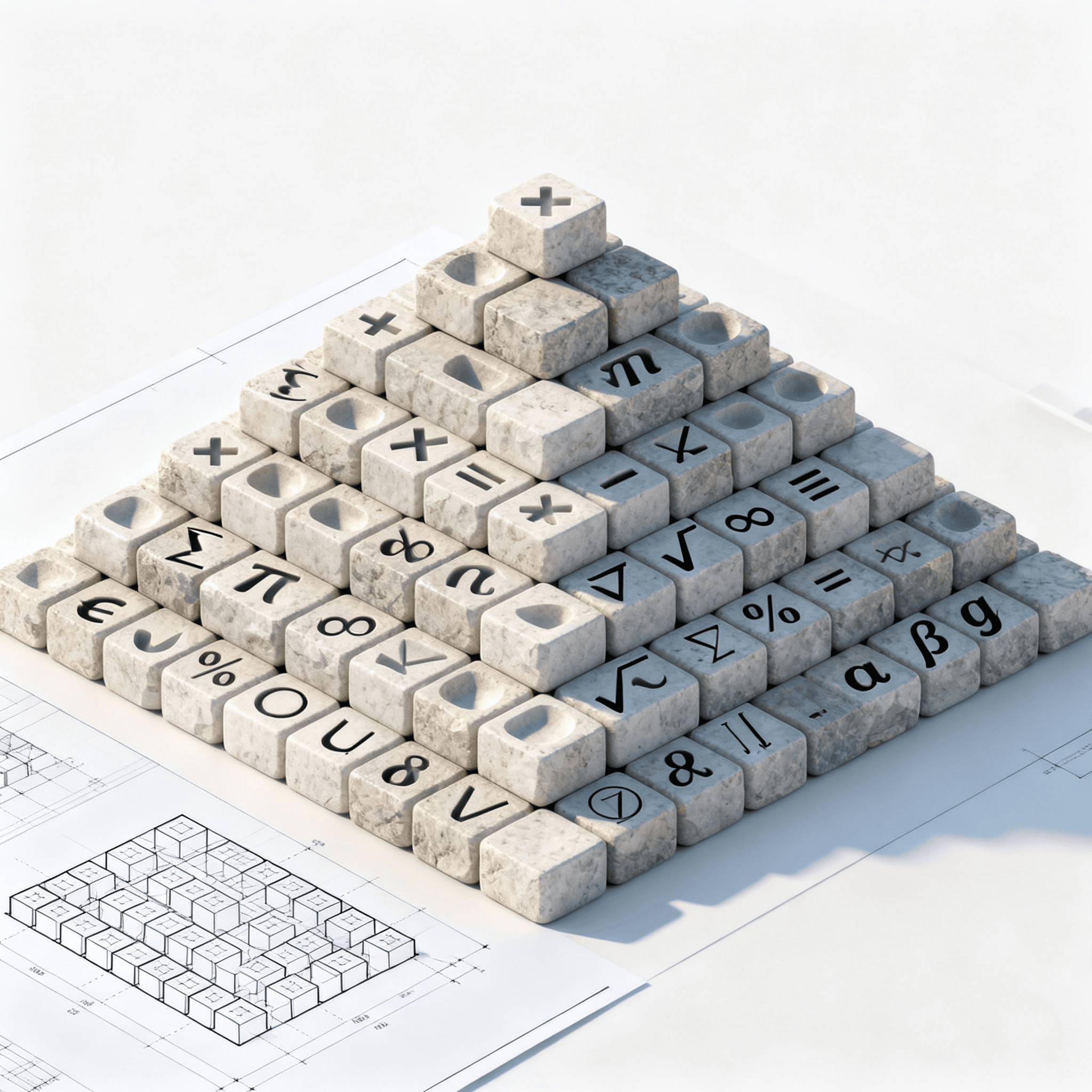
Understanding Math Signs and Symbols Through Examples
To go from memorization to mastery, students should work with examples that connect symbols to real meanings. Consider the following cases:
Inequalities: 5 ≤ 7 means “five is less than or equal to seven”. The less than or equal symbol gives precision beyond just <.
Angles in Geometry: ∠ABC represents the angle formed by line segments AB and BC. Without the angle symbol, the sentence would be lengthy.
Functions: f(x) is read as “f maps values of x”. This notation effectively describes random variables, their possible values and the links between set A and set B.
Factorial in Combinatorics: n! means multiplying all positive integers from 1 to n.
For example: 5! = 5 × 4 × 3 × 2 × 1 = 120.
By connecting symbols with real definition examples, students stop seeing them as abstract marks. They begin to understand that symbols have same meaning everywhere in math.

Benefits of Mastering Mathematical Symbols for Faster Math Learning
1. Saves Time in Calculations
Mathematical symbols allows students to write mathematical expressions quickly without lengthy explanations.
For example: Instead of saying “add three and four and compare with the sum of two and five”, we write 3 + 4 = 2 + 5 using the equal symbol. Using basic math symbols like the multiplication symbol (×) and division symbol (÷), as well as other theory symbols, also speeds up basic operations and arithmetic operators usage.
2. Improves Accuracy
Common math symbols and basic mathematical symbols have a same meaning worldwide. The square root (√) indicates the main or positive solution. The greater than or equal (≥) and less than or equal (≤) symbols help ensure clear understanding. This clarity enables students to perform math operations correctly. It also helps them to recognize key math objects without delay.
3. Enhances Problem-Solving Speed
Using combinatorics symbols like n! or arithmetic operators helps students set up mathematical expressions efficiently and move straight to solutions. Symbols like unknown value placeholders or f(x) for random variable mapping reduce confusion in timed tests and allow faster reasoning.
4. Supports Higher Learning
Higher-level vector spaces, complex numbers and triple integrals use complex parts and simple roots. The study of the imaginary unit (i), complex conjugate, natural logarithm (ln), Archimedes constant (π), and other math constants connects high school and advanced math concepts. To solve advanced problems, it’s key to understand the unit circle, important math sets, the identity matrix and infinities.
5. Builds Confidence
Students who see common symbols as tools, not obstacles, develop a positive attitude towards math. Mastering basic and complex symbols, including understanding the positive number, can reduce anxiety. It encourages tackling tough problems and builds fluency in using symbols. This helps represent numbers and other key math concepts systematically.
How Codeyoung’s Interactive Math Classes Use Mathematical Symbols for Effective Learning
Mathematical symbols are the building blocks of problem-solving. Symbols like the minus sign and multiplication symbol are basic. But symbols, like the identity matrix or infinity, hold deeper meanings. They are more than just shortcuts. They form their own language. This language shows mathematical objects, operations and important sets.
At Codeyoung, students don’t just memorize math symbols or struggle to recall the definition example of a square root. Instead, they experience these symbols in action. Through live classes, games, and real-world math, kids link each symbol to its meaning.
For example:
The division symbol is introduced with fun real-life scenarios, like sharing pizza
The multiplication dot and asterisk sign are taught with coding-based puzzle
The greater than or equal and less than or equal signs are practiced using number comparisons
Mathematical constants like the archimedes constant (π) or the natural logarithm (e) are explained through the circle’s circumference or growth models
This approach transforms mathematical concepts into foundational components of problem-solving. Students learn to see how an unknown value (x) or a random variable fits into a real-world problem. Mapping values with symbols in vector space, set theory, or combinatorics helps learners gain a strong and lasting understanding.
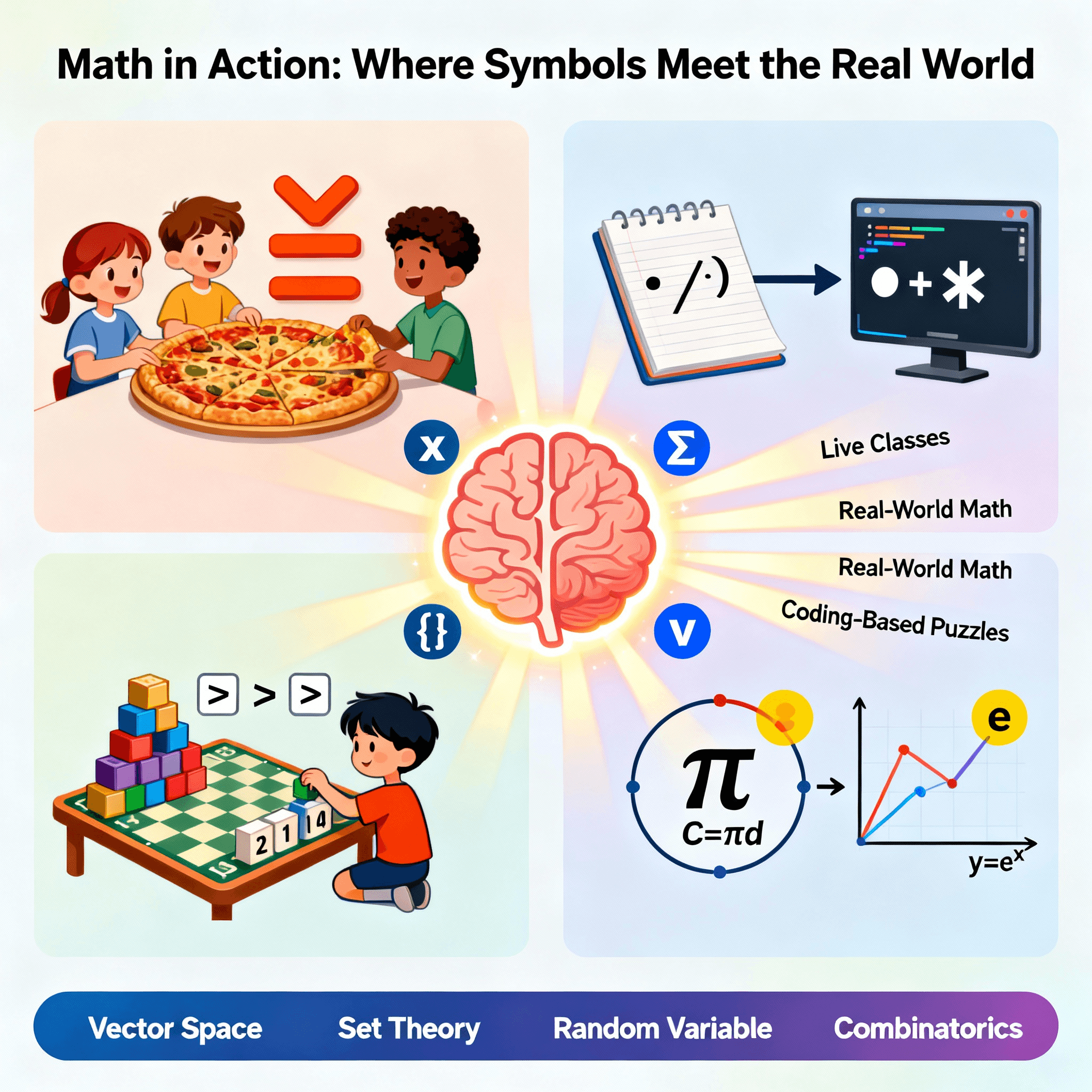
Tips to Help Students Remember Key Math Symbols
Learning common math symbols doesn’t have to be boring. Here are practical strategies that parents and teachers can use to reinforce learning while making it engaging:
1. Use Flashcards
Flashcards with symbols on one side and their meanings on the other are a simple yet effective tool. For example, you can use square brackets [ ] along with a quick definition from set theory. Flashcards help kids remember tricky symbols, like the complex conjugate and the imaginary unit (i).
2. Practice Through Worksheets
Worksheets on basic operations like addition, subtraction, multiplication and division that help students recognize arithmetic operators better. Worksheets can introduce triple integrals, parallel lines, or line segments for advanced learners. Repetition ensures that these symbols become second nature.
3. Incorporate Visuals
Visual aids, like diagrams of the unit circle or a complex plane, make mathematical objects easier to grasp. For example:
Showing the angle formed in a triangle when using the cosine function
Demonstrating how a fourth root is the principal root of a positive number. By linking symbols with visuals, learners remember them more effectively
4. Encourage Daily Use
Daily practice is key. Encourage kids to use basic symbols, like the equal sign (=), positive integers, and negative numbers, in daily problem-solving. Activities like calculating the circle’s circumference or identifying an upper bound in a set, help them connect math to daily life.
5. Gamify Learning
Games and challenges keep students engaged. For instance, a symbol-matching game can include common symbols like f(x) or set A, along with more complex number ideas. Gamification makes practice fun. It motivates students to explore symbols and common constants without stress.
Conclusion
Mathematical symbols are not just marks on paper. They serve as building blocks for logic, problem-solving, and real-life applications. From the multiplicative identity (1) to the additive identity (0), and from natural numbers to complex numbers, every symbol used carries meaning.
By learning math symbols list, students can represent numbers, explore possible values and solve problems with speed and clarity. Codeyoung’s interactive math classes help kids do more than memorize. They learn how symbols represent values, show fixed objects and link to bigger math ideas.
With proper guidance, students gain both confidence and long-term comprehension. Codeyoung helps learners unlock the power of math symbols. Whether recognizing the infinity symbol, using the multiplicative identity or exploring vector space, students become better problem-solvers.
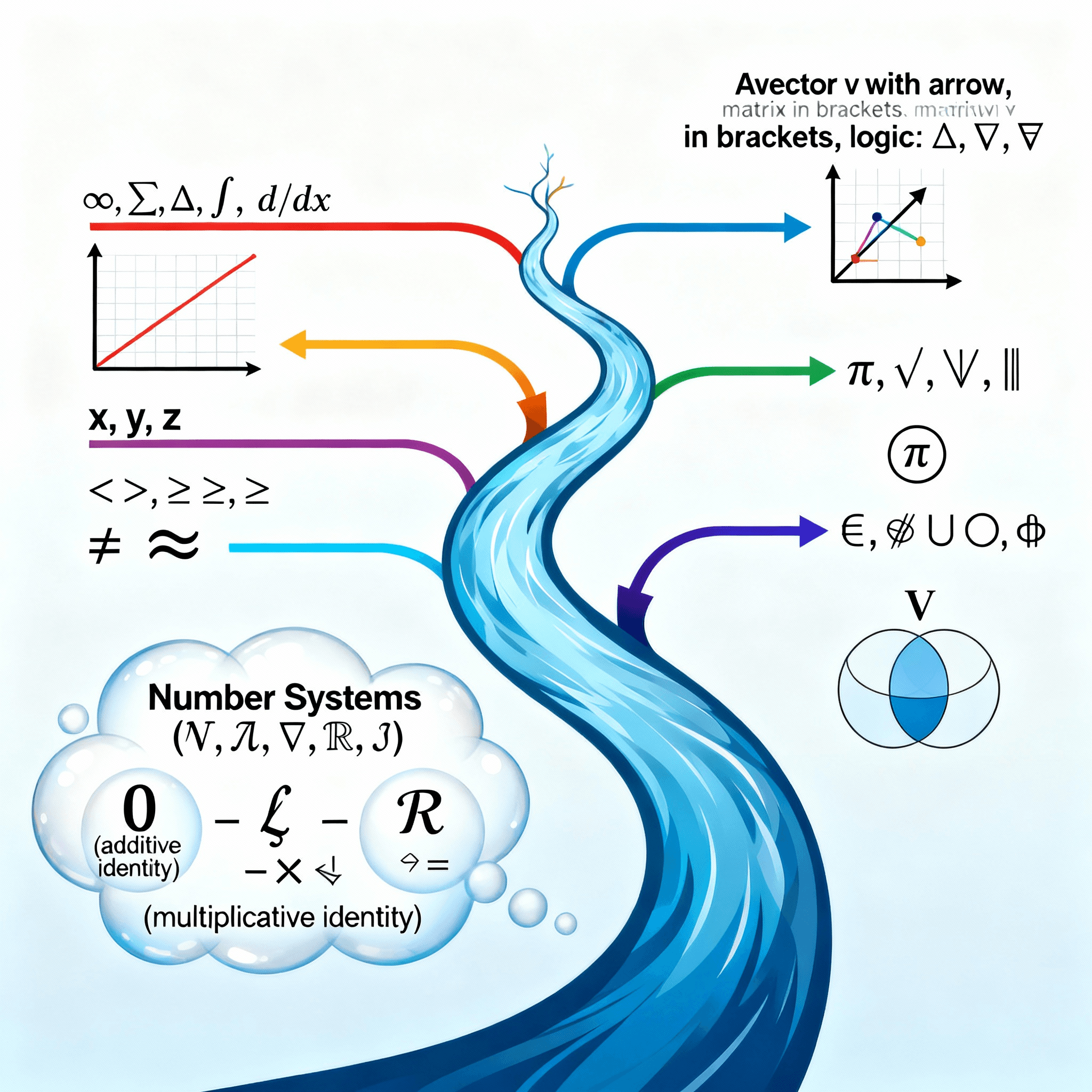
Frequently Asked Questions
What are common challenges students face when learning mathematical symbols?
Many students find mathematical symbols confusing because similar-looking signs like the division symbol, multiplication dot, or minus sign can have different meanings. Without practice, they may forget how basic math symbols apply in mathematical expressions. Struggles with symbols often slow problem-solving and make learning key mathematical concepts harder.
How can parents support their child in recognizing and understanding math symbols?
Parents can use flashcards, games, and daily examples to help kids identify common math symbols like the square root, equal symbol, or greater than or equal sign. Linking mathematical objects to real-life situations builds confidence. Turning learning into play helps children remember how symbols represent numbers and mathematical operations.
Are there specific strategies to help children with learning difficulties like dyscalculia master math symbols?
Yes, children with dyscalculia benefit from multi-sensory strategies, such as using visual aids, square brackets, or physical objects to show basic operations. Repetition and practice with set theory or unit circle examples help them connect abstract mathematical symbols to meaning. Breaking down complex symbols into smaller steps makes learning easier.
How does symbol recognition impact overall math confidence and performance?
Quick recognition of basic mathematical symbols lets students solve problems faster, whether it’s multiplication, division or angle formed. This reduces frustration and boosts confidence in handling mathematical operations. When children see mathematical constants or key mathematical objects as familiar tools, they approach math with less fear and more curiosity.
Can difficulties with math symbols indicate a learning disability?
Struggling with math symbols, like the infinity symbol, imaginary unit or identity matrix can indicate dyscalculia or other learning challenges. If a child struggles to link symbols with their meanings in math, consider getting a professional evaluation. Early support improves understanding of common symbols and overall performance.

